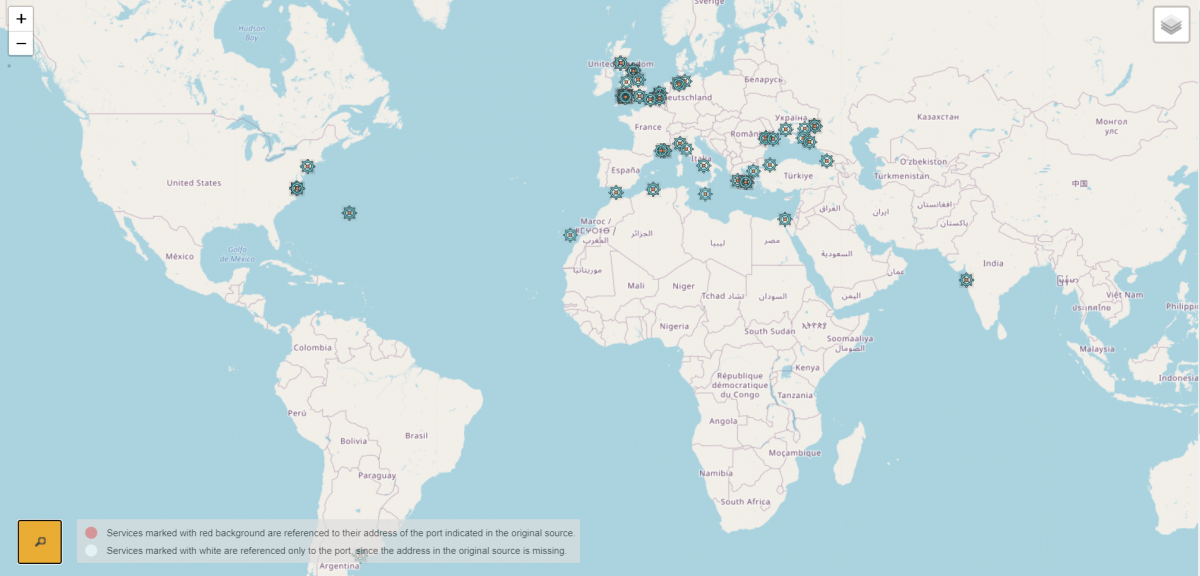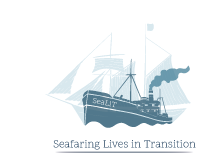Unpublished material from the archival sources enables us to reconstruct the full network of these businesses, which provided their services to ships across the globe. More specifically, the data on mapping come from account papers of the Greek cargo steamer George M. Embiricos, 3636 grt/2324 nrt, built by Short Brothers of Sunderland in 1904 and owned by S. G. Embiricos of Andros. The account papers are kept at Kairis Library of Andros. The ship operated between 1904 and 1916, when she was torpedoed in her 50th voyage by a German submarine. Box n. 1 of the maritime archives of the S.G. Embiricos at the Kairis Library contains the aggregate sheet accounts and balances of the 50 voyages. For every single voyage, between voyages n.17 and n.49, one finds a dossier that contains the crew list, the charter party, the abstract of sailing and engine logs, the captain’s account log, and every single receipt of expenses. The reconstruction of the ship operation services network is based on those bills and receipts of payment and includes information about the name of the business, the type of activity, the port, the address (when recorded) and the type of business. The exact position of every firm on the map (pinned in the form of a red steering wheel) is based on the address stated in the documents or found by historic city guides of the period. When this type of information is not available, then the coordinates of the specific port, where the firm was located, are given instead (pinned in blue steering wheel).
The 33 voyages (n.17 to n.49) from 22 July 1908 to 6 June 1916 offer important evidence. During this period, George M. Embiricos visited 50 ports and contracted with 257 businesses of ship operation services. The geographical scope of operation was mainly between the Black Sea (9 ports), the Mediterranean (13 ports), and the north western Europe (21 ports). North Atlantic (5 ports), South Atlantic (1 port), and India (1 port) had a limited participation in the trade routes of George M. Embiricos despite the fact that they proved very profitable, based on balance sheets of the voyages.

Visit the map
The services were grouped in categories, which are listed in the following table, recording at the same time the number of professionals of each category per port from 1908 to 1916. The following table lists the general categories of services and the number of professionals of each category per port during the documented period of the voyages of the ship (1908-1916). Based on the category of services provided at each port, we can infer the designated role of each port in the trade routes of George M. Embiricos. There are three types of ports in the division of labor of the ship: a) the ports related to the loading and discharging the cargo, b) the ports of call and c) the ports functioning as a terminus and beginning of the voyage other than that of the loading and discharge of the cargo. In the ports of the first category, e.g. in the Black Sea, Germany, Netherlands or in the Americas, the ship used services related to the handling of cargo, such as grain elevators, cargo superintendents and ship agents. In the ports of call, like Piraeus, Genoa or Algiers, the ship used food and coal suppliers as well as ship chandlers for the essentials of the voyage. In some of these intermediate ports, like Istanbul or Kerch, more specialized services were provided by agents and brokers, e.g. assistance in the bureaucratic procedures for the entrance to the Black Sea and lighters for the exit from the Sea of Azov, needed due to the shallowness of its waters. The ports in the last category, including mostly ports in the southwestern UK like Cardiff, the nearby Newport or Barry, functioned as a preparatory stage for the following voyage. In these ports, the ship did the necessary cleaning and repairs, made provisions of equipment, hull and engine materials, food and coal before the homeward journey carrying coal to the Mediterranean.
![]()
